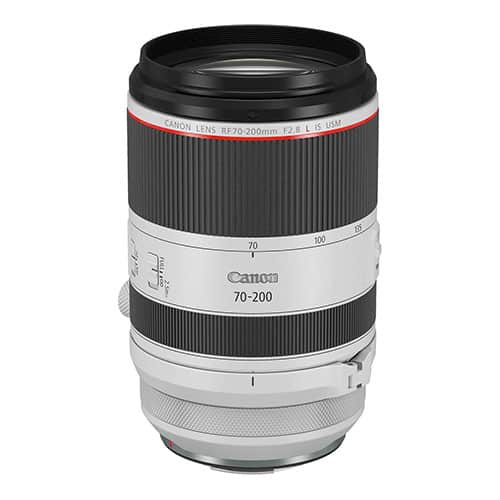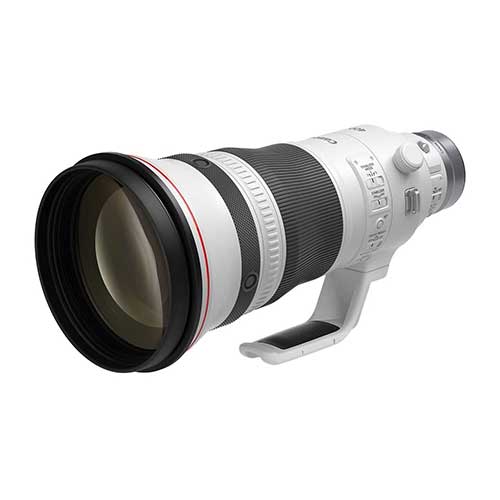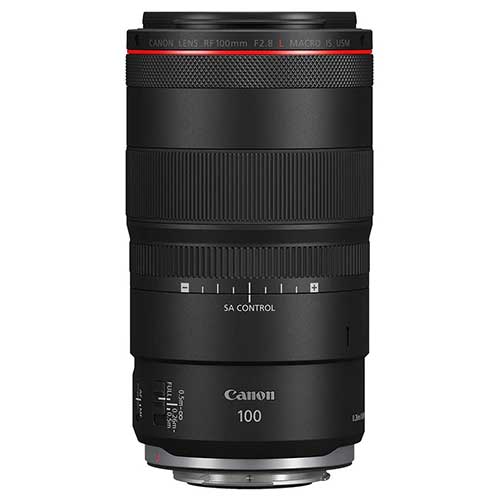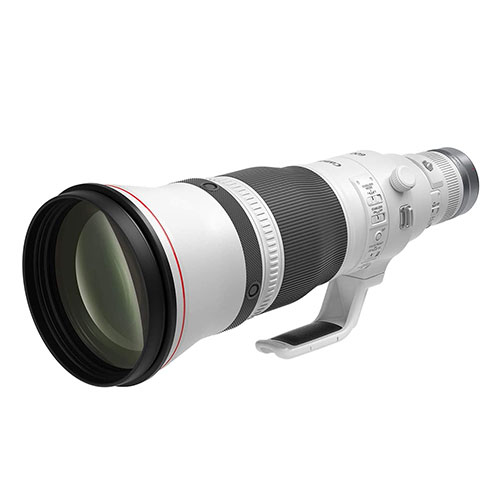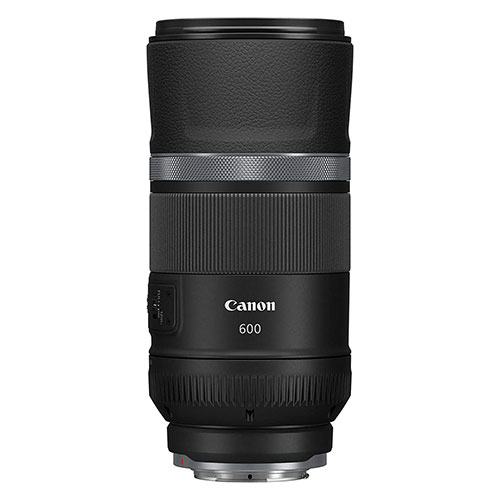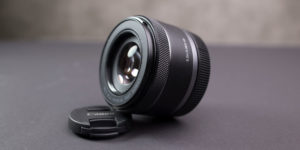With their impressive spec, performance, and image quality, the full-frame offerings in Canon’s EOS R camera range have tempted many photographers to move over to Mirrorless.
And rightly so; R-series cameras are well suited to a wide variety of photographic styles at both the enthusiast and professional levels. Not least of all wildlife photography.
Of course, the Canon RF line of lenses doesn’t currently offer wildlife photographers the same extensive options as some other lens systems.
But what the RF line presently lacks in choice, it more than makes up for in terms of optical quality and performance.
What’s more, many Canon RF lenses are extremely well suited to shooting wildlife photography.
But precisely which Canon RF wildlife photography lenses should be in your bag? And what are the most important features to look for when choosing a wildlife photography lens for your EOS R camera?
No sweat, whether you’re looking for a telephoto prime for local bird watching or a more versatile zoom to take on safari, in this guide to the best Canon RF lenses for wildlife photography I run through what I believe are the most appropriate products available in the RF range for photographers looking to move into shooting wildlife.
That done, in the second section I go deeper into the nitty gritty of what makes a lens suitable for this particular task. This way you can make your own mind up.
Canon RF 70-200mm f/2.8 L IS USM
Offering an excellent compromise between focal length, light-gathering abilities, AF performance, image quality, and – importantly – price, Canon’s RF 70-200mm f/2.8 L IS USM gets my vote as the best Canon RF lens for wildlife photography currently available.
I’ll go into why I’ve chosen this lens as my favorite in a second. But first I want to make clear that it wont be the right lens for absolutely everyone.
With focal length being the most notable cause for hesitation.
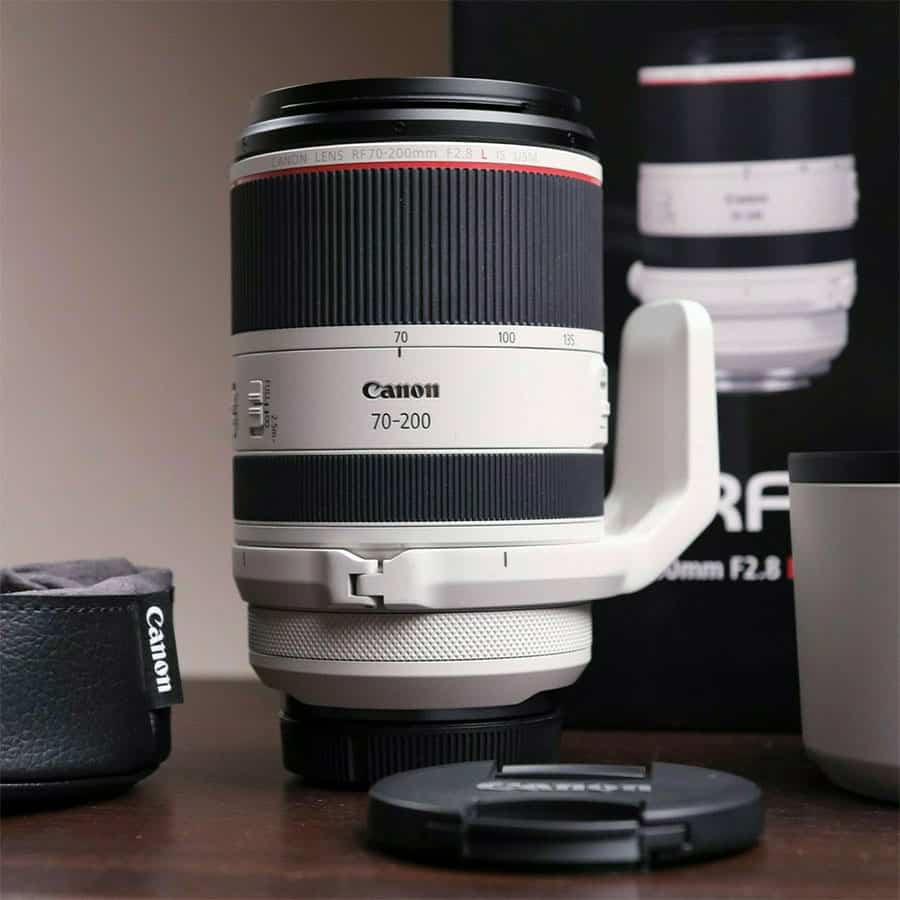
While 70-200mm coverage will suffice for most enthusiasts, wildlife photography pros and well-heeled amateurs may also want to invest in something longer for when 200mm falls short of the mark.
If that’s the case though, then you’ll need to invest big (see the 400mm f/2.8 below to get an idea of just how big). Especially if you want to retain the beautifully fast and constant maximum aperture of f/2.8 offered by this lens.
And while almost any fast telephoto zoom would rank high in a guide to the best wildlife photography lenses, it’s little surprise the number one spot goes to a model that also happens to come with highly impressive autofocus credentials.
Indeed, reaper-drone precision and accuracy are pretty much essential for wildlife photography. And thankfully the RF 70-200mm f/2.8 is lightening fast and super accurate on this front. Meaning you’re unlikely to miss a single shot.
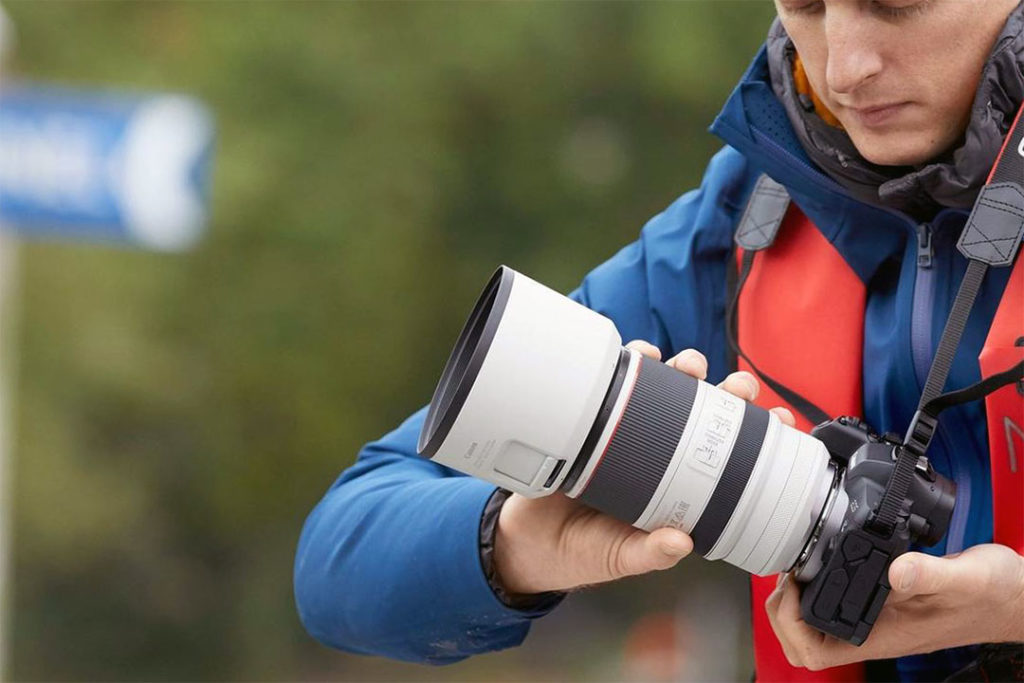
As if this wasn’t enough, though, the 70-200mm also excels in terms of image quality; contrast and sharpness are superb, even wide open, with a touch of improvement in the corners as you stop down to f/4. And this effectively holds true right through the zoom range.
True, you will likely notice a moderate dose of vignetting at wider zoom settings. And as you would expect, this effect only gets heavier the closer we get to 200mm. Stop down a few stops, though, and the problem largely disappears.
But as already noted, that f/2.8 aperture is one of the biggest draws of this lens. And in practice few users will want to spend much time working anywhere else.
Thankfully, though, in practice the problem of vignetting is rendered largely irrelevant thanks to software processing.
Finally, build quality is great and, despite its long reach, the 70-200mm f/2.8 actually stows away as quite a convenient and compact form.
Canon RF 400mm f/2.8 L IS USM
Do you absolutely need the RF 400mm f/2.8 L IS USM in order to shoot wildlife photography?
No. I think that most of us can probably get by with something a little shorter for most wildlife shots.
But would the RF 400mm f/2.8 be useful?
Hell yeah!
In fact “useful” is a total understatement. This is an absolutely amazing lens. Indeed, it’s pretty much every EOS R-owning wildlife photographer’s dream.

So why isn’t the 400mm f/2.8 sitting at the number one spot on my list of the best lenses for wildlife photography?
Well, it easily could have been. And if you need the level of telephoto reach provided here, there’s honestly no better option available – so put it at the top of your own list by all means.
But when compared to my first choice (above), you really would have to need that extra length for it to be worth paying out the thousands of dollars required to own this thing.
Let’s not beat about the bush; the 70-200mm f/2.8 is certainly not cheap, but the 400mm f/2.8 is phenomenally expensive!
With that said, I’m not going to mention the high asking price again. If you need this lens and can afford it, you know who you are.
Rest assured that it will not disappoint. The rest of us can but drool in our dreams.
For a start, not only is 400mm an excellent focal length for shooting heavy pull ups of distant subjects, but with a maximum aperture of f/2.8 this lens is also incredibly fast too.
You’ll have no trouble shooting in gloomy lighting conditions or achieving a fast shutter speed for freezing action.
Then there’s the amazing face recognition autofocus; highly effective at locking onto both fast-moving humans and other animals.
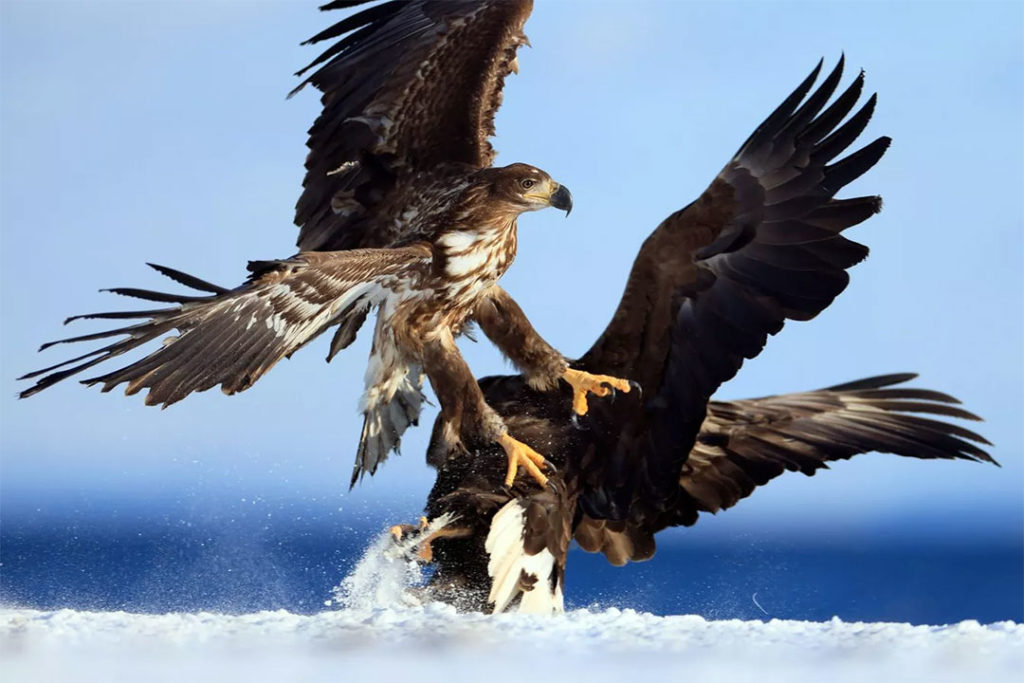
Focus presets help speed things up even further by allowing you to quickly jump between predetermined points.
And the inclusion of a focus limiter means that the lens should never struggle to differentiate between the subject and objects in the extreme background or foreground – very handy for when shooting through foliage or long grass for example.
That’s all very reassuring. But what about image quality?
Trust me, this thing is sharp!
Indeed optical performance is already excellent at f/2.8, and gets even better at f/4. And, importantly, the bokeh produced by this lens is a truly beautiful sight to behold.
There is one optical flaw of note, however; some vignetting is detectable at wider aperture settings. But that really is the only negative thing I have to say on this front.
Of course, this lens could certainly not be described as either compact or lightweight.
Yes, most photographers will be able to reel off a few frames handheld without too much difficulty – as long as they don’t have to keep the thing up in the air for too long. But if you’ll be working with it for any period of time, you’ll almost certainly want to use a monopod for added support.
Talking of which, Canon’s optical image stabilization works brilliantly here. So any blur in your images will likely be down to fast moving wildlife rather than an accidentally moving photographer.
Finally, for those who crave even greater magnification, the 400mm f/2.8 transforms into a 560mm f/4 lens with the addition of the 1.4 x teleconverter. And with no noticeable loss in either image quality or performance either!
Canon RF 100mm f/2.8L Macro IS USM
Not all wildlife is big, fast-moving, nor located at a distance.
And a lens that permits capturing smaller creatures close-up, and on a large scale, will be highly appealing to many wildlife photographers.
This is where a macro lens such as the RF 100mm f/2.8 L IS USM comes in.
And let me start this review by pointing out that the 100mm f/2.8 offers a scale of reproduction much greater than your average macro lens; 1:1.4 to be exact (most macro lenses are merely 1:1).
On top of which, closest focus distance is 10.2″/26cm. This permits the shooting of tiny critters as if they were veritable giants.
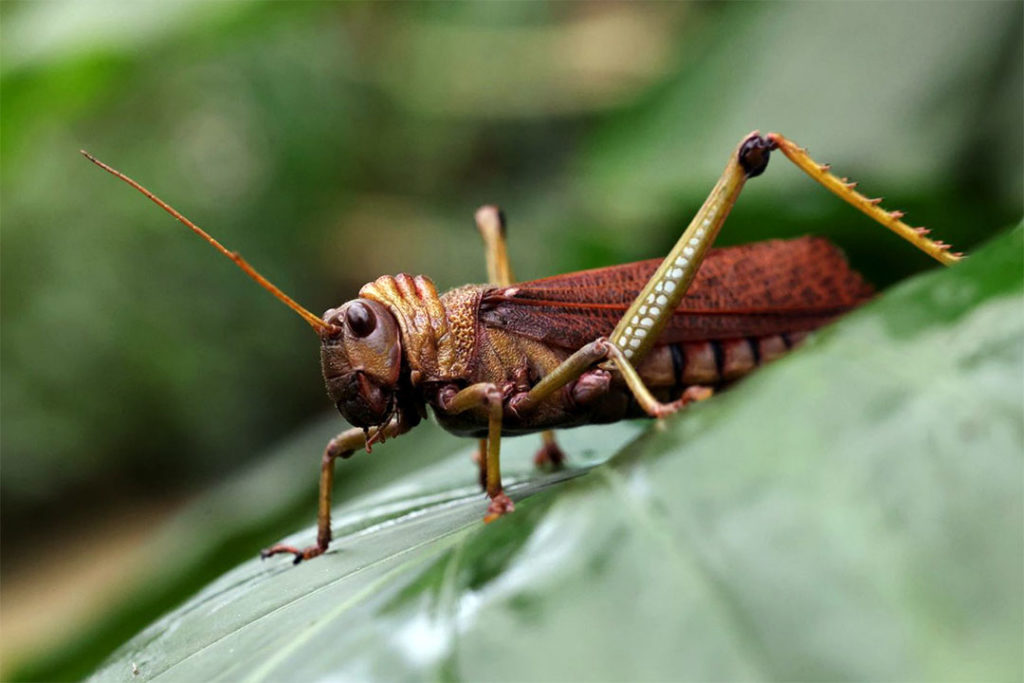
On top of this, the 100mm f/2.8 macro has another trick up its sleeve; soft-focus control. Canon calls this Spherical Aberration Control – or SA Control for short.
Essentially it allows you to add a degree of soft flare over a sharp base image; making for an impressive visual effect.
Precisely how much flare you get depends on what setting you choose via the SA control ring located on the lens barrel. In practice, I found that a little SA goes a long way.
Indeed, the best results seem to be achieved by adding just a touch of spherical aberration; whereas to my eyes more extreme settings made for an overly dominant effect that was a little distracting.
Turning our attention from these novel features now to more typical lens specs, performance is no less impressive.
For a start, image sharpness is stunning – even wide open. And this is almost as true at the corners of the frame as in the center of the image. There’s also no image distortion detectable at all, and the lens doesn’t tend to suffer from flare either. Good stuff!
What’s more, a nine-blade diaphragm helps to make for some very smooth bokeh action; just as well really, considering that close-up shots on this lens will exhibit an extremely shallow depth of field.
Meanwhile, focusing is supremely fast and accurate.
And not only does AF lock onto the subject with ease, the lens rarely gets confused or starts jumping back and forth between subject and background – a problem that sadly effects many other macro lenses.
If you ever do find yourself struggling with this annoyance, however, the issue can easily be avoided altogether by making use of a handy focus limiter switch located on the lens. This really does make the 100mm f/2.8 very well suited to shooting wildlife – of any dimension – where there will often be distracting objects such as plants or even other animals located in the foreground.
Finally, when it comes to image stabilization, Canon claim an incredible eight stops of improvement with this lens. I can’t promise that this is truly the case in practice, but OIS is certainly very impressive.
Although I get the impression that stabilization perhaps doesn’t work quite as well close-up as it does when shooting from a distance.
Canon RF 100-500mm f/4.5-7.1 L IS USM
With its gloomy variable maximum aperture of f/4.5 to f/7.1
I’m almost reluctant to recommend Canon’s RF 100-500mm L IS USM lens as a suitable solution for wildlife photography.
Nonetheless, recommend it I shall, as not every wildlife photographer spends all their time lurking in dismal corners of the globe hoping to capture shadowy nocturnal fauna.
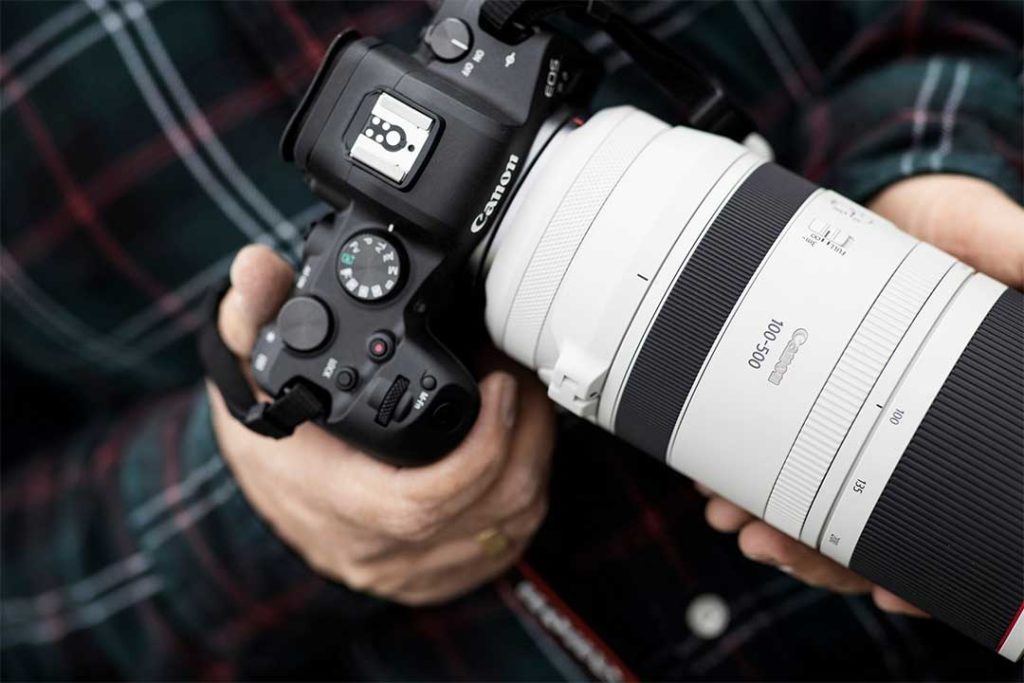
Or, to put it another way, if you tend to shoot in bright lighting conditions – on safari, say – and value zoom reach over aperture speed, who am I to say that this lens isn’t the right solution for your wildlife photography?
And to be honest, if the slow aperture does work for you, you’ll likely have little to complain about.
Image quality, for one, is excellent. Indeed surprisingly good for a lens with such an impressive focal range.
And when shooting at around the 100mm mark, you’ll see great center sharpness and contrast even at wider aperture settings. Meanwhile any corner softness at this focal length has totally cleared up by the time you stop down to about f/8.
As we might expect, corner sharpness is even more impressive between 300mm and 500mm.
However you will start to notice a degree of pincushion distortion and vignetting creep into the picture as you edge towards the outer reaches of this range. Yet as both of these defects can easily be fixed by software, I don’t consider either to be especially worrying.
Despite the rather slow maximum aperture, depth-of-field is obviously going to be extremely narrow when shooting with this lens – simply due to the fact that it only offers long focal lengths.
That being the case, it’s a pleasure to discover that the 100-500mm produces very pleasing bokeh; meaning that out of focus backgrounds will be smoothly rendered and free from ugly distractions.
Autofocus is very fast and accurate, with face-detect performing brilliantly. Image stabilization, too, works a treat.
As with all these RF lenses, build quality is superb. And although you might expect a lens offering such a long zoom range to be something of a monster, it’s actually relatively small and lightweight.
Canon RF 600mm f/4 L IS USM
A lot of great wildlife photography is shot using a 200mm prime or zoom.
And for many people this will be just fine.
But for certain shooting situations, glass offering a much longer focal length will be pretty much essential. This is where Canon’s RF 600mm f/4 L IS USM comes in.
The RF 600mm is the beefier companion to Canon’s RF 400mm (above) and comes with an even more terrifying price tag.
But to stretch a metaphor perhaps a little too far, while the 600mm offers an extra 200mm in brawn, it’s sadly somewhat lacking in brains.
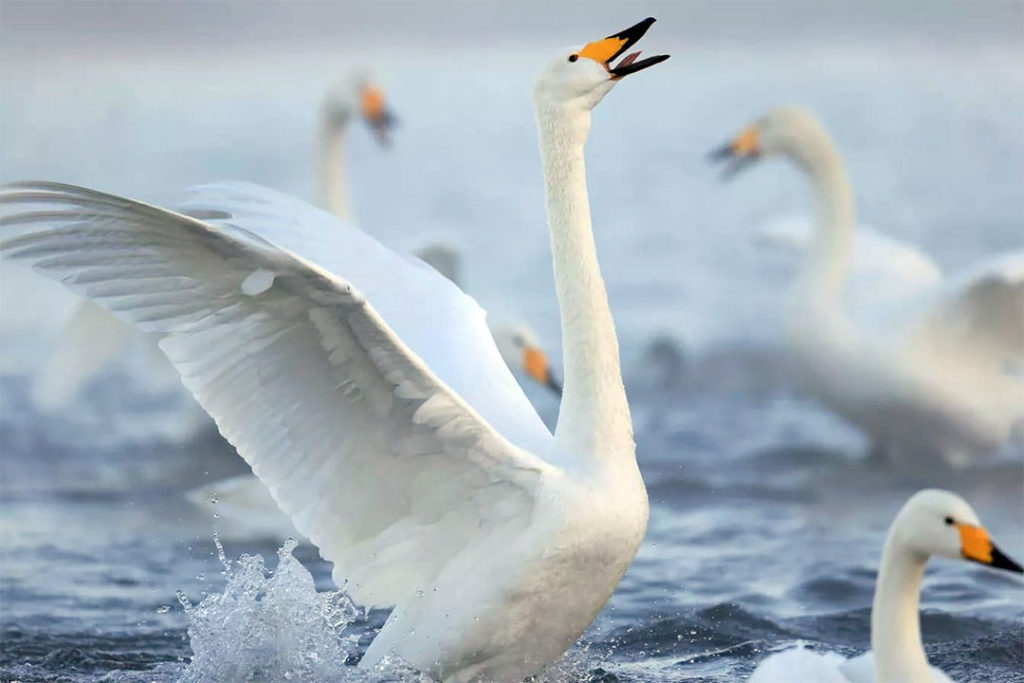
By which I mean that, despite the hefty expense associated with purchasing this lens, it comes with a less impressive maximum aperture than its shorter sibling; f/4 vs f/2.8 to be precise.
What’s more, as I noted earlier, the purchase of this additional 1,4x rf convertor will transform the 400mm into something very similar to the 600mm anyway (although keep in mind that just the convertor alone costs as much as many consumer-level camera lenses).
This basically means that if you purchase the 600mm lens, you get a 600mm lens only. But by instead buying the the 400mm plus convertor, you get two very expensive lenses in one.
Still, some wildlife photographers – those exclusively shooting smaller birds and mammals, dangerous animals, or protected species, for example – might be more inclined to skip the 400mm lens altogether and go directly for the 600mm.
That’s fine. As it’s undoubtedly a great lens.
I won’t repeat how great it is here though, as beyond the smaller aperture it’s essentially no different from the 400mm above.
Just be aware that the 600mm f/4 option exists, should you feel the need – and possess the necessary funds – to purchase it.
Canon RF 600mm f/11 IS STM
Here’s another Canon RF product that I’d instinctively strike off my list of wildlife photography lenses in the first round merely on aperture grounds – it has only one aperture setting, and it’s f/11 for crying out loud! – but instead I’m including it here so that you can make up your own mind.
To be absolutely clear, if you spend any time at all shooting at sunrise, during the blue hour, or even simply in the shade, this thing will be about as much use to you as sneakers are to a snake.
On the other hand, if your subjects tend to be brightly lit, but situated a long way off – I’m struggling to imagine exactly what these hypothetical subjects might be, but don’t let that stop you – then this might just be the lens you’re looking for. (See the bird photography video above, the 600mm can be well suited to certain situations).
I mean, beyond that impressive 600mm focal length, there’s also superb image quality, fast and accurate autofocus, and great image stabilization.
It also costs a mere fraction of the 600mm f/4 (above).
But yes, as I said; f/11 only.
Oh, and it’s not weather sealed. But that’s OK; with that aperture you’ll only be able to use it in bright sunshine anyway!
The Canon RF Wildlife Photographer’s Buying Guide
The range of lenses currently available for Canon EOS R series cameras lags way behind most other Mirrorless systems.
As we’ve seen, though, despite the limited options available, there are nonetheless some amazing bits of glass in the RF lineup for those wishing to shoot wildlife photography.
But how to work out precisely which lens is for you? In this section I go over the most important points to consider when choosing a Canon RF lens for wildlife photography.
Focal Length
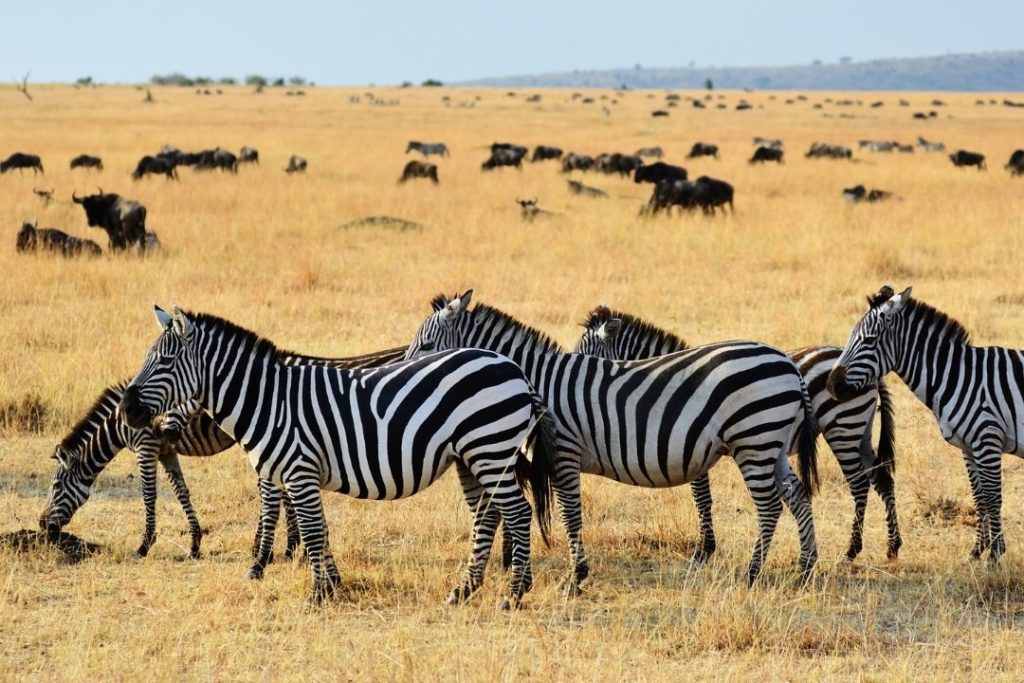
It’s not unheard of for wildlife photographers to shoot at shorter focal lengths – particularly when capturing contextual images of animals in their natural habitat.
Yet in most cases you will not be able to get close enough to your subject without disturbing it (or putting yourself in danger) for anything shorter than a medium telephoto lens to be of practical use for wildlife photography.
In fact, for the majority of wildlife shots, if you’re going to have even half a chance of filling the frame with the subject, you’re going to need to work with lenses that are even longer than this. Perhaps considerably so.
Typically, then, you’ll need something around 200mm as your go-to lens. This could be a fixed 200mm prime, or a zoom that also covers shorter or longer focal lengths.
Plus ideally you’ll also get yourself something much longer, like a 400mm or 60mm lens. Assuming that your budget can stretch that far; as we’ve seen above, this kind of glass can be very expensive indeed.
The one area of wildlife photography where an overly-long lens might not be so useful is when shooting macro images of insects and other small creatures. For close up wildlife shots such as these, anything between a 65mm to 110mm focal length might be your best bet. Any longer, and you’ll have to stand too far away from the subject for the lens to be of genuine practical use.
Aperture
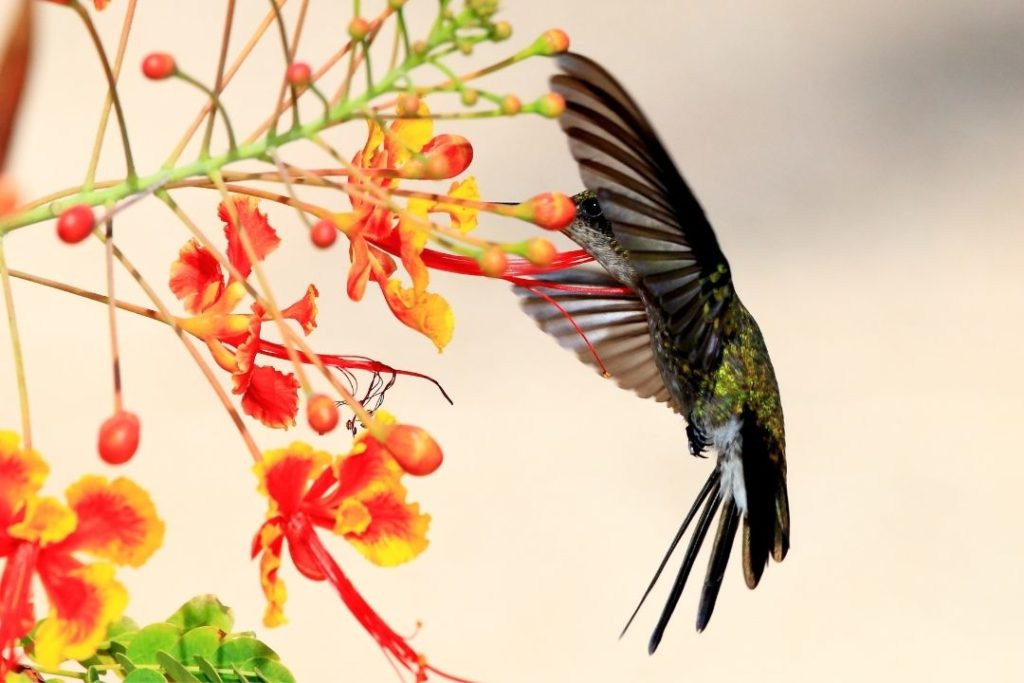
Beyond focal length, aperture is probably the most important element to consider when choosing a lens for wildlife photography.
Weather can be unpredictable, and undergrowth heavily shaded; making the superior light-gathering abilities of a fast aperture lens a huge advantage in the field.
The alternative of course is to shoot at a slower shutter speed – risking blurred images – or to up your camera’s ISO setting, resulting in increased digital noise. Clearly neither is an ideal solution.
Meanwhile, the narrower depth-of-field created by a wider aperture opening will result in blurrier backgrounds; helping you to isolate your subject against its environment.
In short, a faster aperture brings little in the way of inconveniences for the wildlife photographer – and in fact usually offers a whole bunch of advantages.
The only issue? Fast glass typically costs much more than slow glass. And for fast long glass, you can expect to spend a lot of money indeed.
Focusing
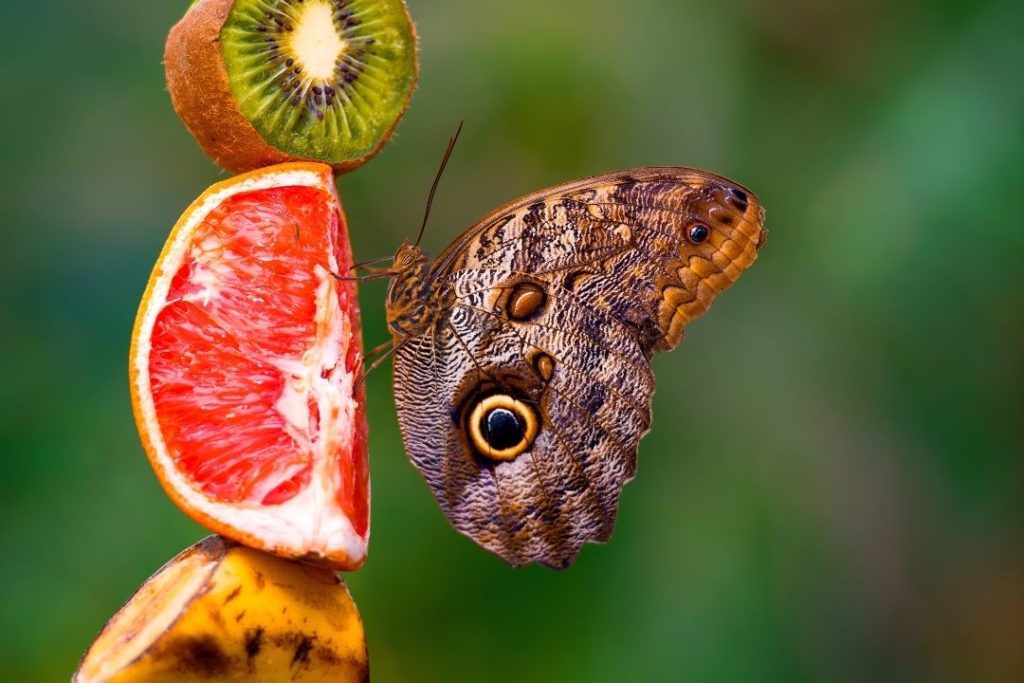
Focusing, too, is an extremely important consideration for wildlife photographers, who will typically seek out the best AF system they can afford.
Manual focus will occasionally prove to be the most practical solution in tricky lighting situations, or with slow moving creatures, but realistically AF will be the best approach 99% of the time when shooting wildlife photography.
Clearly, then, you’ll want to go for a camera and lens combination that results in lightening fast and highly accurate autofocus performance.
The good news is that Canon’s AF system is well known to be state of the art. And certainly none of the native Canon RF lenses could be considered duds on this front.
Still, there are some subtle differences to be found in the performance of the various RF lenses, so you would do well to choose your EOS R wildlife photography glass carefully.
Finally, also be sure to test out the subject-detect and focus tracking performance of any lens you are considering purchasing, as clearly these features can be an enormous asset when it comes to capturing fast-moving wildlife.
Thankfully the EOS R range performs particularly well in detecting – and locking onto – not only human faces, but ones of the animal variety too.
Image Quality
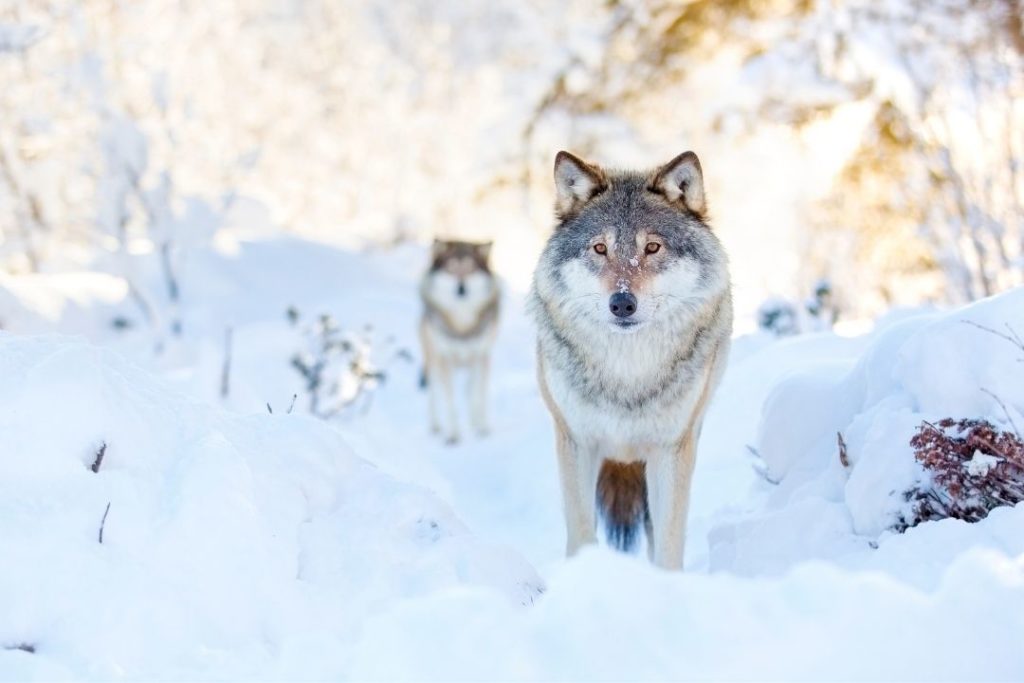
When discussing image quality, it’s always important to consider the final destination; what might you ultimately want to do with the photos you shoot with this lens?
If it’s possible that one day – no matter how far off that day may be – you might want to make prints from your image files, then you should absolutely give consideration to the optical quality of those files.
In practice this means using lenses that produce sharp, detailed images exhibiting a good level of contrast, and which are free from any unattractive optical quirks or flaws.
But perhaps you’re just looking to share your wildlife photos on social media and other web-based platforms?
Well the fact is that true optical excellence will likely not even be detectable at this resolution.
What’s more, when you upload a file to a social media app, the algorithm will automatically subject it to a combination of compression, sharpening etc. in order to minimize file size while making your photo “pop”. By the time your photos have been through all these processes, there will probably be so little left of your original image that the quality of your lens will barely matter anyway.
The take away: if you can’t imagine ever needing to print your photos, and don’t plan on projecting them on a huge screen, cheaper glass will probably be just fine.
Primes vs Zooms

Although the old primes vs zooms debate is unlikely to ever fully be settled, the reasons for rejecting zoom lenses have become much fewer in recent years.
While zooms offer the convenience of being able to switch between different focal lengths at a twist of the wrist, traditionally they have come with a number of compromises that made them less than ideal for shooting wildlife photography.
Notably things like a slow maximum aperture and an overall lack of image quality.
To be clear, many zooms still suffer from such compromises. But many others do not.
Indeed, the technical challenges of manufacturing a fast, sharp zoom lens have not fully gone away. Yet as optical expertise and technology have improved, some remarkably good zoom lenses have come on the market. And occasionally you’ll actually find a zoom that outperforms similarly specced primes.
Of course, even if you do identify an excellent quality zoom that produces great quality images, you can count on the fact that it won’t come cheap.
For all of the above reasons, many photographers still prefer to work with fixed prime lenses when shooting wildlife.
And generally speaking it will be much easier and cheaper to find a lens offering all of the other criteria I list as essential for wildlife photography if you restrict your research to primes.
At the time of writing, however, Canon’s RF line is still rather limited. And there’s not much overlap between the prime and zoom offerings anyway. So for some wildlife photographers, a mix of zooms and primes may present the best solution.
However, as the RF range continues to expand, just keep in mind that you may need to purchase several different lenses in order to cover the same focal length range of a zoom, thus potentially cancelling out any economic advantage offered by individually cheaper primes.
On the other hand, if you do find a great zoom lens that meets all your needs, and can afford the asking price, then why not? A top-end zoom certainly beats lugging multiple heavy lenses into the wilderness.
And as it happens, after carefully considering all the Canon RF lenses available today, I actually believe that a zoom lens – the beautifully fast and sharp 70-200mm f/2.8 to be precise – currently presents the best overall option for wildlife photography with the Canon EOS R range of cameras.
Bokeh
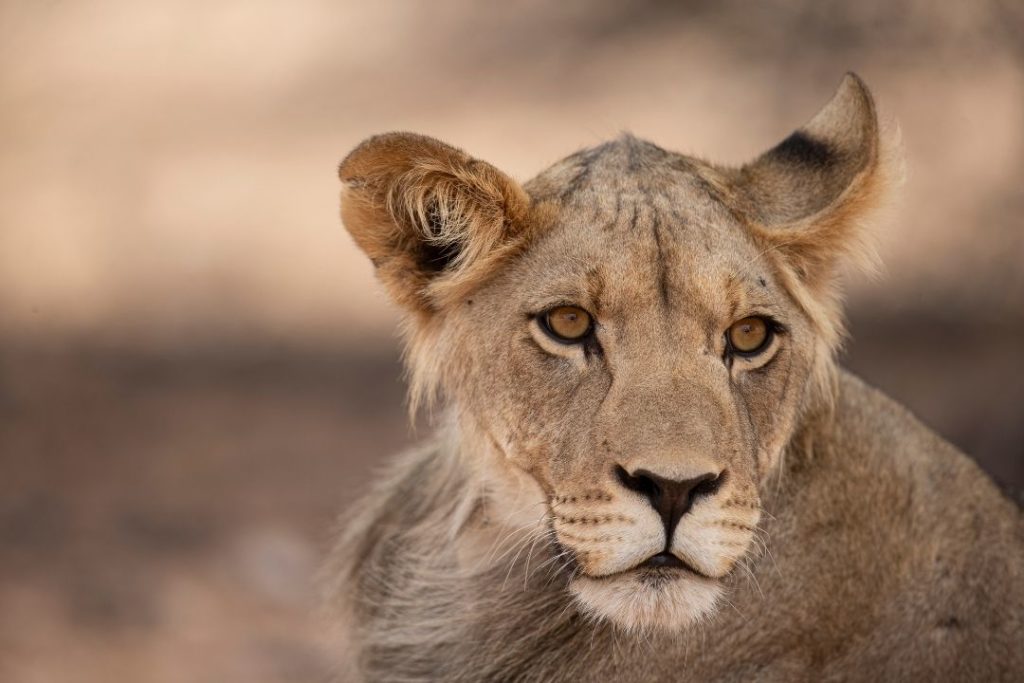
As already mentioned, a lot of wildlife photography tends to be shot on long lenses, and using fast shutter speeds. Combined, these two elements will typically result in highly blurred backgrounds.
Yet if you look closely at the out of focus areas of different photographs, you’ll notice that not all lens blur is the same. And the way in which some lenses blur the background can be a lot more attractive than others.
The subtle differences in the quality of blur produced by different lenses is often referred to as bokeh.
With smooth, distraction-free blur typically considered to be “good” bokeh, and bitty, chaotic, or overly busy background blur seen as “bad” bokeh.
Given that most wildlife photographs have blurred backgrounds, it goes without saying that the way in which a given lens renders out of focus information will be of the utmost importance to any photographer who values the aesthetic qualities of their images.
And realistically, that’s pretty much every wildlife photographer out there. I mean, who doesn’t want their photos to look good?
Clearly then, bokeh will be of considerable importance to the average wildlife photographer when choosing a lens.
Having said this, though, lens bokeh is a fairly subjective topic, and what one photographer finds highly pleasing to the eye might be a real turn off for another.
In short, although in my reviews I’ve mentioned where I found that a particular lens produces notably attractive bokeh, this is just my own personal opinion.
And when it comes to bokeh there’s no substitute for simply trying out a lens yourself to see if you like the effect it produces.
In any case, there is no precise optical recipe for good bokeh. And the way in which a particular lens renders out of focus areas of an image depends on a whole variety of technical factors that can’t always be understood merely from looking at a spec sheet.
My advice, then, is simply to try the lens, and if you like what you see you’re probably good to go.
Image Stabilization
Optical image stabilization has revolutionized handheld photography by making it possible to capture shake-free images at much lower ISOs and slower shutter speeds than was imaginable even just a few years ago.
Clearly this is a huge advantage when shooting in less than optimal lighting conditions.
And of course a lot of wildlife photography is produced in just such conditions; think birds in dense forest or nocturnal mammals at dusk.
There’s also the fact that camera shake is always more of a risk when using long lenses. And again the majority of wildlife photographs are shot with precisely this kind of lens.
These factors combined mean that effective IOS really is a must for the average wildlife photographer.
Just keep in mind that while image stabilization will be a huge help in reducing camera shake, it will do nothing to stop a moving subject from ending up an unrecognizable blur when shooting at a slow shutter speed.
Build and Weather Sealing
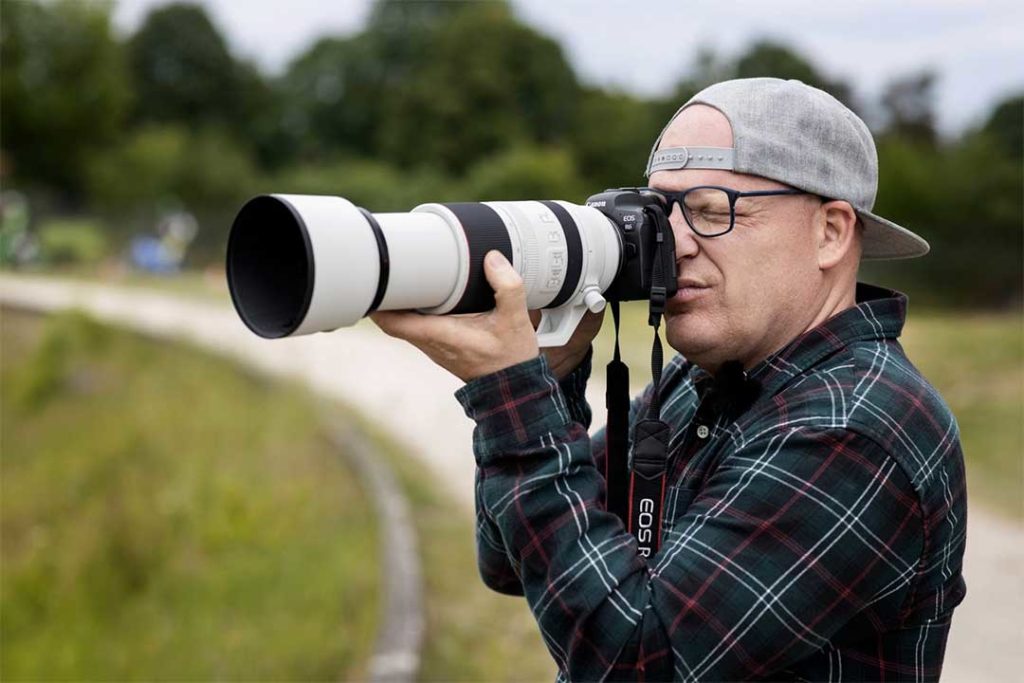
As wildlife is generally to be found in, well, the wild, it goes without saying that by doing wildlife photography you can often end up exposing both yourself and your gear to some fairly extreme climatic conditions.
This being the case, as a general rule I recommend seeking out lenses that are solidly built from metal or high-grade plastic and offer at least a degree of protection from the elements – partiucularly at the lens mount.
As it happens, though, at least half of the current Canon RF lens range meets these criteria. On top of which, most of the lenses in the RF line that lack weather sealing are not really appropriate for wildlife photography anyway due to other reasons.
Indeed, the only lens I’ve included in this guide that isn’t weather sealed is the 600mm f/11 – which is an extremely niche product anyway.
In short, as a wildlife photographer using an EOS R series camera, Canon mostly has you covered.
Resources
- Wildlife photography with the Canon EOS R – LENZ LIM PHOTOGRAPHY
- Photographing Wildlife from a Blind With the Canon EOS R Camera – Canon
Final Thoughts
Canon EOS R shooters don’t currently benefit from the same impressive array of lenses available to users of rival Mirrorless systems. Yet despite this, photographers looking to make use of RF lenses for wildlife photography are certainly not left hanging.
To be sure, there is actually some very impressive wildlife glass to be found among the RF range; lenses that would satisfy even the most demanding of professional wildlife photographers.
As we’ve seen, though, these lenses tend to retail at a very significant premium.
Nonetheless, not all the Canon RF wildlife photography lenses I’ve featured in this guide come with five-figure price tags.
And if you’ve invested in the EOS R camera system you should in any case be prepared to spend a little money on good glass.
Which of the Canon RF lenses I’ve listed here would you choose for wildlife photography?
Or do you feel that I’ve overlooked a particularly useful Canon RF wildlife photography lens?
Let me know what you think. I’d love to hear from you in the comments section!


